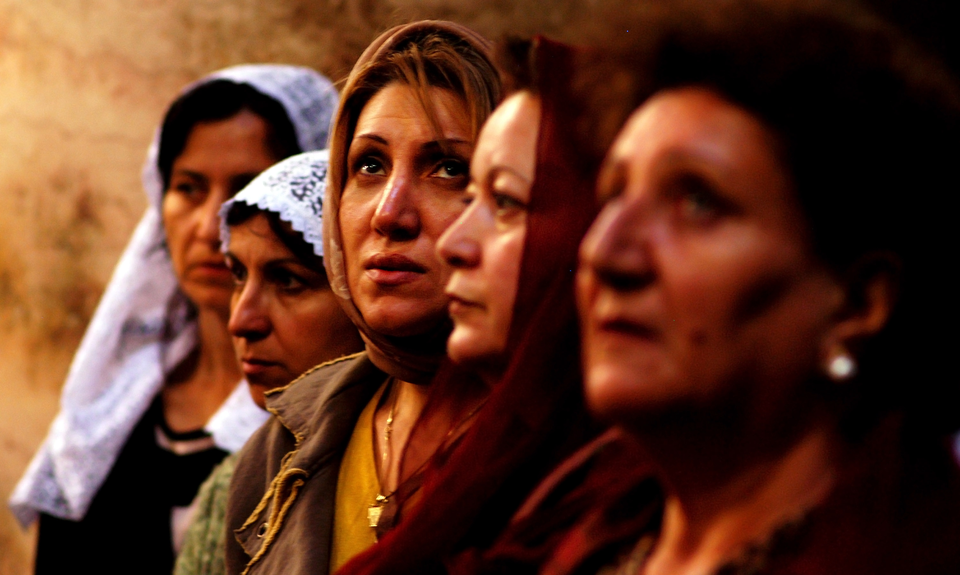The issue of abortion in the Middle East is too often reduced to that of religion. But depending on the time and place, it is not perceived in the same way everywhere.
Abortion has been, and still is, one of the longest lasting social debates. Recent events, more specifically the overturn of Roe v. Wade by the Supreme Court in the Unites States, have demonstrated that the discussion is not over. Abortion is defined as the intentional termination of a pregnancy. Historically, humans are the only animals who have attempted to find means to control pregnancy and deal with unwanted children. In any social or historical context humans have had the same general reasons to do so.
In most societies abortion was only admissible in cases of deformation or malformation, social and political crises that would refrain parents from being able to grant the child means of survival, and when the pregnancy was dangerous to the mother’s life or health. Even though having a child is an immense responsibility, only in very few cases is it tolerated to terminate a pregnancy for the reason of not wanting or not being psychologically or emotionally ready to have a child.
Abortion didn’t wait for Islam
Leading to the emergence of Islam as the predominant religion in the Middle East, many religious belief systems coexisted in the region including polytheistic ones. Paganism was extremely popular at the time and as religion does, it had a lot of influence on the way people perceived procreation. Living conditions were much less comfortable than today and the existential threats to humanity were multiple. The difficult and harsh living conditions made parents reluctant to have children, especially during periods of political turmoil, lack of resources and poverty.
Medical advancements and understanding of biology and the reproductive process were very primitive. Many means of contraception were elaborated to avoid having children; condoms were made of animal intestines and some people would consume herbs and other substances as contraceptives. Without a clear and developed scientific understanding, the effectiveness of those methods was minimal which resulted in many unwanted pregnancies. In many pagan belief systems, child sacrificial ceremonies were a way for those communities to give an offering to their god/gods.
In addition, poverty, and fear of not accessing necessary resources or protection for the child’s survival often pushed parents to commit infanticide. Female infants were significantly more vulnerable than male ones as parents were often concerned about their inability to protect their child’s ‘integrity’ or about the child being unable to care for them in their old age. Infanticide was also committed in cases of deformation or malformation as those children had a low chance of survival. As is the case with most religions, Islam proposed solutions to address the social issues of the time.
For God’s sake
First Islam presented the idea of having a child as a blessing from God regardless of gender. It stipulated that parents should be happy and proud of having a healthy child. In addition, it privatized family affairs and proposed the idea that no outside authority should be able to influence the things that happen in the family sphere.
Secondly, Islam completely prohibited infanticide; in Sura 17:31 (Al Isra), infanticide done out of fear of poverty was prohibited. This verse further claims that God will provide to the child and the parents. Moreover, children were substituted by cattle in religious sacrifices. Islam retells the story of Ibrahim who was ordered by God to sacrifice his son Ismail. As the latter had his father’s blade on his neck, God sent down a sheep to be sacrificed instead, symbolizing that God accepted animal sacrifices as offerings and did not require “the innocent.”
Thirdly, the Holy Qur’an did not have a precise stance on abortion, but some Islamic scholars still agree that it is allowed as long as the foetus was not ensouled by God. Opinions drastically diverge at the definition of that moment; the Hannafi doctrine allows abortion up to 120 days after conception for valid reasons while the Zadi doctrine allows abortion 40 days after conception for any reason. Abortion was generally perceived as a compromise between being forced to have a child and infanticide.
God save the Economy
For centuries, the Ottoman Empire ruled over the entire levant region. Despite being one empire, which incorporated Islam as its official religion and main source of law, the application of Islam inspired principles, rights and laws varied throughout history. Before 1786, the adopted school of thought was the Hannafi doctrine and abortion was allowed up to 120 days after conception for any reason, after that window, abortion was equated to murder. After 1786, abortion progressively became illegal. Authorities justified that by using baseless religious claims. It is argued by historians that the real reason was that the Ottoman Empire needed to satisfy the agricultural, industrial, and military needs of a growing empire. Consequently, women’s bodies were instrumentalized by demographic policies to increase the empire’s population.
In 1916, France and the United Kingdom had divided up the Middle East into colonies in application of the Sykes-Picot treaty. The European powers criminalized abortion even more harshly than the Ottomans and imposed their Christian Family values on local populations. This allowed them to eliminate what would have been abortion havens and promote population growth in the area for the development of industries and agricultural activities.
Consequently, abortion, contraceptives and reproductive health are heavily stigmatized in modern Arab societies. That colonial history also paved the road for authoritarian leaders to intrude on family matters and to claim the right to make decisions on behalf of people even when it comes to personal decisions like having a child.
A plural Middle East
Today, the Middle East is on one hand, an extremely diverse place in terms of ethnicities and religions, culture and economy. While on the other hand, some similarities can be highlighted such as political organization and institutional religion. In fact, most Arab countries are led by authoritarian regimes who have adopted Islam as their official religion. A general overview of the data collected from the region led to the following observations:
• 1 in 10 pregnancies ends in abortion
• 3 countries allow abortion in case of rape or foetal impairment; 6 countries allow abortion for health reasons and only 2 (Turkey and Tunisia) allow it early and freely.
• 6% of all maternal deaths are the result of unsafe abortion.
In Lebanon, abortion has been illegalized by the Penal Code since 1943. According to Article 539 to 546, a mother who aborts risks a prison sentence ranging from 3 months to 3 years. Those who help her risk 1 to 3 years in prison. The only legal exception that exists to this restriction is the situation in which the mother’s life is in danger and has consulted 3 physicians who unanimously agree that abortion is necessary. In addition, access to safe abortions is limited by the insufficiency of the healthcare infrastructure, social and religious pressure and the cost of the procedure.
Read also: Sexual Harassment: three wise Human resources
In Turkey, the adoption of a liberal interpretation of Islam allowed the introduction of abortion clinics in the 1960’s as part of a family planning program. In the same period, pronatalist programs were abandoned and the use of contraceptives became encouraged. As a result, a significant drop in maternal mortality rates and ratios was noticed. In 2012, local authorities launched an anti-abortion campaign and limited access to legal and safe abortions. Abortion clinics were shut down in secluded areas as the administration decided to merge abortion clinics with medical clinics, which resulted in a reduction of the number of accessible abortion clinics. In addition, many women feel uncomfortable visiting abortion clinics for privacy concerns, as there are no privacy measures put in place. Pulling on people’s religious nerve reignited the stigma around the topic.
Well sin
Pronatalists consider that abortion is a great sin and should not be allowed. They argue that it is their responsibility to stand against abortions and all the things that go against the word of God, claiming that their inaction would be punished as severely as the sins of those who commit them. This argument has always allowed similar groups to impose their view on morality, religion and social construct on others. Some moderate pronatalist consider that at the current level of awareness and sexual education, legalizing abortion would lead to abuses with people using them as a contraceptive. They thus prefer to restrict access to abortion and force individuals to have children while having a low level of education.
Prochoice groups consider that abortion is a medical procedure that should be accessible to any woman seeking it. The extent of freedom varies, while some are in favour of universal access, others favour conditioning access. In general, the prochoice movement consists of civil society actors who adopt a liberal view and who actively fight for the empowerment of women in Arab societies. Those groups also adopt secularist beliefs that aim at fighting against restriction of personal freedoms, unity of state and religion and gender equality.
Aborted discussion
The discussion about abortion cannot be dissociated with the discussion revolving around women’s rights in the region. Most legal systems have very little to no regulation that grant women legal equality. In addition, most legal systems are the result of Islamic and colonial law and impose a patriarchal social construct in which women are sometimes deprived of autonomy in their decisions. Discussions about sex and sexual health remain extremely taboo which limits the conversation and social awareness about the topic. Consequently, local authorities do not prioritize sexual education and healthcare.
The evolution of abortion in the Middle East highlights that humans have had the same historic reasons to avoid having a child, that choice was and still is, just like in many areas in the world, subject to demographic policies that aim at instrumentalizing women’s bodies as factories to make babies that are seen as commodities, based on the demographic needs of the moment. How will demographic policies evolve in relation to the need for younger generations in aging societies?






